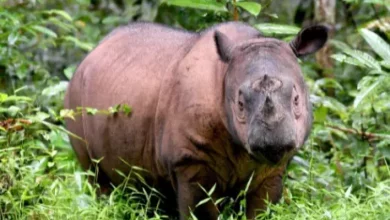The impressive fossil of a school of fish in full swimming
Millions of years ago, a large school of fish was minding its own business in the rocky rivers of North America when suddenly, somehow, Bam! – their lives came to an abrupt end.
Thanks to a stroke of luck (for us, not them), in their last moments they fossilized under a blanket of mud, leaving a snapshot of their life for posterity.
This fossil is not only an incredible pleasure to behold, it is also teaching scientists about social interaction and social behavior in ancient fish. Perhaps not surprisingly, they seem to follow the same codes of conduct as current species: don’t stray from the herd but from your neighbor.

This fossil has been discovered in the Green River Formation, an Eocene geological formation with fossil beds that span 5 million years. In this formation appears the sedimentation of a group of mountain lakes in the Rocky Mountains (Colorado, Utah and Wyoming) of about 50 million years ago.
The discovered fossil measures around 57 × 37 centimeters and contains the fossilized remains of at least 259 fish of the fossil species Erismatopterus levatus . As can be clearly seen, the fish are very close to each other and all appear to be swimming in the same direction, suggesting that it is a school of fish on the move.
The discoverers, researchers from Arizona State University, published the study in the journal Proceedings of the Royal Society B for which they analyzed the position of the 250 fish. On this they have created a simulation model to estimate how the school and individual fish moved.
The behavior of schools of Eocene fish captured in a fossil
Social behavior is a balance of repulsion and attraction, as fish are rejected by close neighbors, so they do not collide, but also show an alignment attraction towards distant neighbors, so that they do not lose their friends.
Like modern fish, the shape of the sandbar suggests that it served to reduce the risk of predators by diluting the risk of being eaten and confusing predators . It appears that the density of the fish was higher in the safer central area, while at the edge of the group it was lower, where predators can easily attack. It is also likely that the larvae and juvenile fish were kept hidden in the core of the sandbar, while the healthier adults were left outside.
It is not clear how the structure of the school of fish was preserved in the fossil; however, paleontologists have unearthed a number of similar fossils that contain “
frozen behaviors,” such as the mind-boggling dinosaur fossil of a Velociraptor and a Protoceratops apparently caught in battle.
“Although it is not clear how the structure of the school of fish was preserved in the fossil, these findings suggest that fish have been forming sandbanks by combining sets of simple behavioral rules since at least the Eocene,” the study concludes. “Our study highlights the possibility of exploring the social communication of extinct animals, which is believed to leave no fossil record.”




